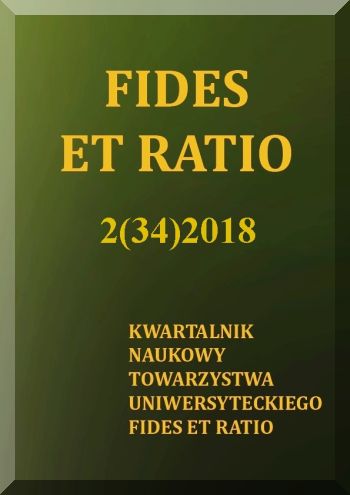Abstract
School mediation is primarily perceived as an alternative way to resolve conflicts or to prevent violence meanwhile research show that implement mediation programs in schools can bring much more positive effects. The article describes why we should think about mediation as a tool of development of students and teachers (in social, emotional and moral sphere) and how to start mediation program in school in the most effective way.
References
Bickmore K. (2002), Peer mediation training and program implementation in elementary schools: Research results, Conflict Resolution Quarterly, 20(2), 137-160.
Burrell A. N., Zirbel S. C., Allen M. (2003), Evaluating Peer Mediation Outcomes in Educational Settings: A Meta-Analytic Review, Conflict Resolution Quarterly, 21(1),
7-26.
Cohen R. (2005), Peer Mediation in Schools: Students Resolving Conflict, Culver City: Good Year Books.
Duda A, Łukasik J. (2011), Mediacje jako alternatywny sposób rozwiązywania sporów
w szkole, Debata Edukacyjna, 4, 20 – 28.
Heydenberk R.A., Heydenberk W.A. (2005), Increasing meta-cognitive competence through conflict resolution, Education and Urban Society, 37, 431-452.
Ibarrola S., Iriarte C. (2013), Evaluation of a School Mediation Experience, Procedia. Social and Behavioral Sciences, 84, 182–189.
Jones S.T. (2004), Conflict resolution education: The field, the findings, and the future, Conflict Resolution Quarterly, 22(1-2), 233-267.
Lane P. S., McWhirter J.J. (1992), A peer mediation model: Conflict resolution for elementary and middle school children, Elementary School Guidance & Counseling, 27(1), 15-23.
Larsson L. (2009), Porozumienie bez przemocy w mediacjach. Jak być trzecią stroną w konflikcie, Warszawa: Wydawnictwo Czarna Owca.
Maxwell J. P. (1989), Mediation in the schools: Self-regulation, self-esteem, and self- discipline, Mediation Quarterly, 7(2), 149-155.
Messing J. K. (1993), Mediation: An intervention strategy for counselors, Journal of Counseling & Development, 72(1), 67-73.
Moore Ch. W. (2009), Mediacje. Praktyczne strategie rozwiązywania konfliktów, Warszawa: Oficyna a Wolters Kluwer business.
Morek R. (2009), Wprowadzenie, (w:) Mediacje. Teoria i praktyka, E. Gmurzyńska, R. Morek (red.), (15-29), Warszawa: Oficyna a Wolters Kluwer business.
Nordhelle G. (2010). Mediacja. Sztuka rozwiązywania konfliktów, Gdańsk: Fundacja Inicjatyw Społecznie Odpowiedzialnych.
Raszewska–Skałecka R. (2013). Mediacje rówieśnicze jako instrument przeciwdziałania agresji i rozwiązywania konfliktów w szkole, (w:) Mediacje ponad podziałami,
M. Tabernacka (red.), (71-83), Wrocław: Prawnicza i Ekonomiczna Biblioteka Cyfrowa.
Rękas A. (red.) (2010), Czy tylko sąd rozstrzygnie nasz spór? Mediacja i sądownictwo polubowne. Informator o alternatywnych sposobach rozwiązywania sporów, Warszawa: Rzecznik Praw Dziecka (2017), Standardy mediacji rówieśniczej i szkolnej w szkołach i innych placówkach oświatowych, Warszawa.
Schmidt F., Treidman A., Marvel J. (2010), Uczeń jako mediator, Gdynia: Centrum Kształcenia Liderów i Wychowawców ARRUPE.
Sweeney B., Carruthers W. L. (1996), Conflict resolution: History, philosophy, theory, and educational applications, School Counselor, 43(5), 326-344.
Świątkowski M. (2012), Polskie prawo pracy, Warszawa: Wydawnictwo LexisNexis.
Thompson S. M. (1996), Peer mediation: A peaceful solution, School Counselor, 44(2), 151-155.
Türnüklü A. (2011), Peer Mediators’ Perceptions of the Mediation Process, Education and Science, 36(159), 179 – 191.
Van Slyck M. R., Stem, M. (1991), Conflict resolution in educational settings: Assessing the Impact of Peer Mediation Programs, (w:) The art and science of community mediation:
A handbook for practitioners and researchers, K. Duffy, P. Olczak, J. Grosch (red.), (257-274). New York: Guilford.
Wojtanowicz K. (2016), Mediacje rówieśnicze jako metoda wychowawcza, Studia Socialia Cracoviensia 8, 2(15), 145–155.
Wojtkowiak M., Potaczała–Perz K. (2014), Mediacja w profilaktyce szkolnej, Resocjalizacja Polska, 4, 135 – 150.
Burrell A. N., Zirbel S. C., Allen M. (2003), Evaluating Peer Mediation Outcomes in Educational Settings: A Meta-Analytic Review, Conflict Resolution Quarterly, 21(1),
7-26.
Cohen R. (2005), Peer Mediation in Schools: Students Resolving Conflict, Culver City: Good Year Books.
Duda A, Łukasik J. (2011), Mediacje jako alternatywny sposób rozwiązywania sporów
w szkole, Debata Edukacyjna, 4, 20 – 28.
Heydenberk R.A., Heydenberk W.A. (2005), Increasing meta-cognitive competence through conflict resolution, Education and Urban Society, 37, 431-452.
Ibarrola S., Iriarte C. (2013), Evaluation of a School Mediation Experience, Procedia. Social and Behavioral Sciences, 84, 182–189.
Jones S.T. (2004), Conflict resolution education: The field, the findings, and the future, Conflict Resolution Quarterly, 22(1-2), 233-267.
Lane P. S., McWhirter J.J. (1992), A peer mediation model: Conflict resolution for elementary and middle school children, Elementary School Guidance & Counseling, 27(1), 15-23.
Larsson L. (2009), Porozumienie bez przemocy w mediacjach. Jak być trzecią stroną w konflikcie, Warszawa: Wydawnictwo Czarna Owca.
Maxwell J. P. (1989), Mediation in the schools: Self-regulation, self-esteem, and self- discipline, Mediation Quarterly, 7(2), 149-155.
Messing J. K. (1993), Mediation: An intervention strategy for counselors, Journal of Counseling & Development, 72(1), 67-73.
Moore Ch. W. (2009), Mediacje. Praktyczne strategie rozwiązywania konfliktów, Warszawa: Oficyna a Wolters Kluwer business.
Morek R. (2009), Wprowadzenie, (w:) Mediacje. Teoria i praktyka, E. Gmurzyńska, R. Morek (red.), (15-29), Warszawa: Oficyna a Wolters Kluwer business.
Nordhelle G. (2010). Mediacja. Sztuka rozwiązywania konfliktów, Gdańsk: Fundacja Inicjatyw Społecznie Odpowiedzialnych.
Raszewska–Skałecka R. (2013). Mediacje rówieśnicze jako instrument przeciwdziałania agresji i rozwiązywania konfliktów w szkole, (w:) Mediacje ponad podziałami,
M. Tabernacka (red.), (71-83), Wrocław: Prawnicza i Ekonomiczna Biblioteka Cyfrowa.
Rękas A. (red.) (2010), Czy tylko sąd rozstrzygnie nasz spór? Mediacja i sądownictwo polubowne. Informator o alternatywnych sposobach rozwiązywania sporów, Warszawa: Rzecznik Praw Dziecka (2017), Standardy mediacji rówieśniczej i szkolnej w szkołach i innych placówkach oświatowych, Warszawa.
Schmidt F., Treidman A., Marvel J. (2010), Uczeń jako mediator, Gdynia: Centrum Kształcenia Liderów i Wychowawców ARRUPE.
Sweeney B., Carruthers W. L. (1996), Conflict resolution: History, philosophy, theory, and educational applications, School Counselor, 43(5), 326-344.
Świątkowski M. (2012), Polskie prawo pracy, Warszawa: Wydawnictwo LexisNexis.
Thompson S. M. (1996), Peer mediation: A peaceful solution, School Counselor, 44(2), 151-155.
Türnüklü A. (2011), Peer Mediators’ Perceptions of the Mediation Process, Education and Science, 36(159), 179 – 191.
Van Slyck M. R., Stem, M. (1991), Conflict resolution in educational settings: Assessing the Impact of Peer Mediation Programs, (w:) The art and science of community mediation:
A handbook for practitioners and researchers, K. Duffy, P. Olczak, J. Grosch (red.), (257-274). New York: Guilford.
Wojtanowicz K. (2016), Mediacje rówieśnicze jako metoda wychowawcza, Studia Socialia Cracoviensia 8, 2(15), 145–155.
Wojtkowiak M., Potaczała–Perz K. (2014), Mediacja w profilaktyce szkolnej, Resocjalizacja Polska, 4, 135 – 150.
Downloads
Download data is not yet available.
